
This is my Nonno. I've previously mentioned my Nonno here on the blog. My mother's father, he was born in 1921 in Italy, in a town on the Istrian Peninsula called Pola (which became part of Yugoslavia after WWII and is now part of Croatia and called Pula).
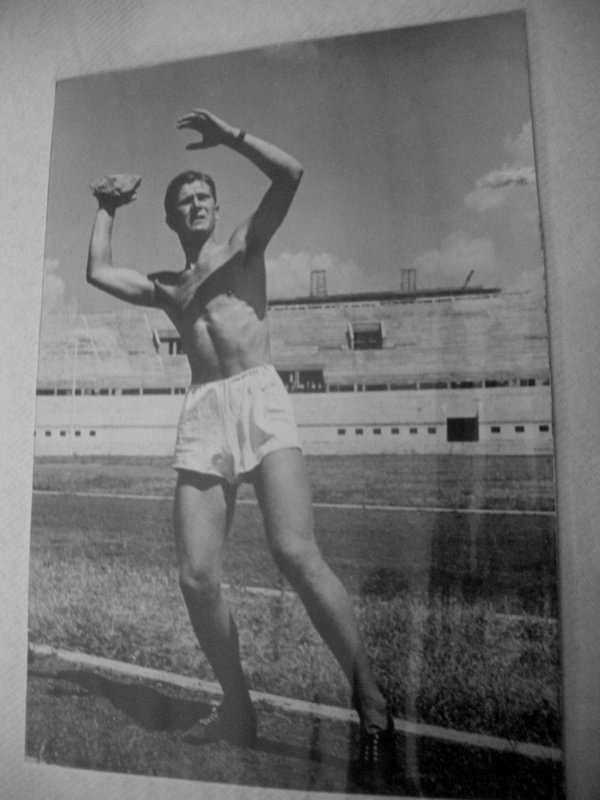
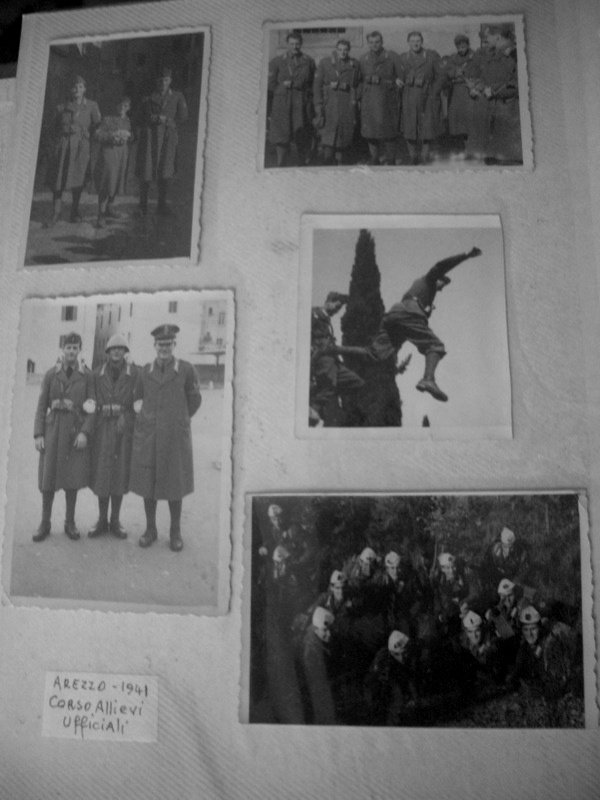
Nonno was an athlete in 1930s Italy, and an officer in the Italian army during WWII. In the late 1940s, having been forced to leave his home town and emigrate over the new border into Italy, Nonno decided to emigrate all the way to Australia, bringing his newlywed bride (my Nonna) with him.
We grandchildren have always enjoyed poring over their old photo album, looking at the photos of them in 1930s and 1940s Italy, then on the boat that brought them down under. Below are the photos showing their first glimpse of Terra Australis, Station Pier, St Paul's Cathedral and the Forum Theatre (the last two photos taken from the train that was taking them to Bonegilla, the migrant camp near Wodonga where they were interned upon their arrival in Australia).
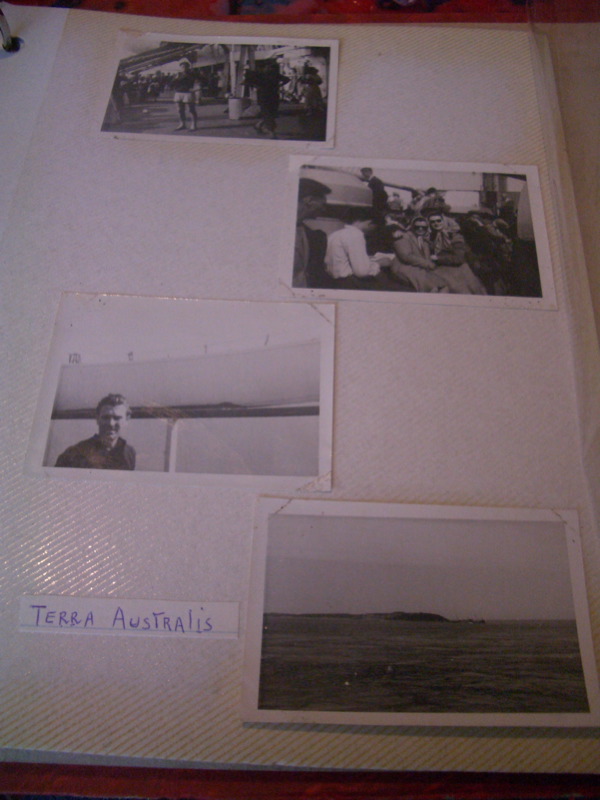
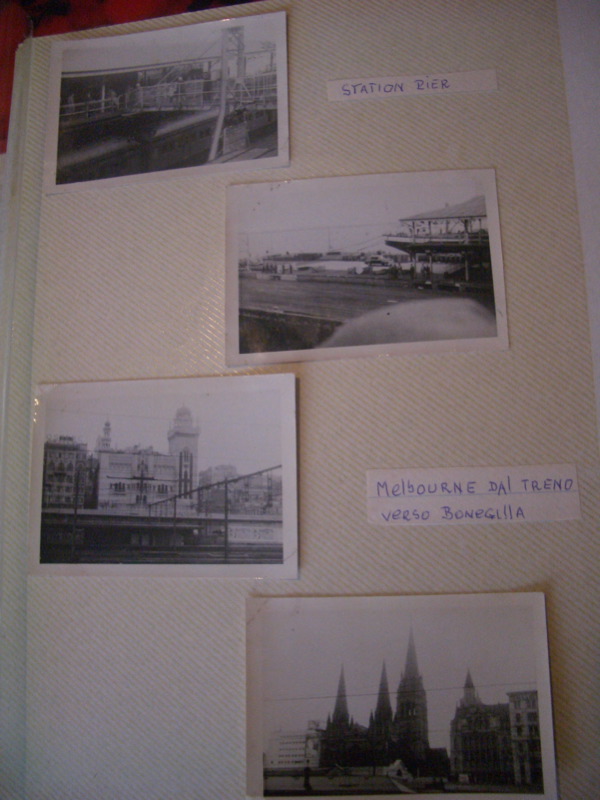
Nonna and Nonno have lived in Australia for 60 years. Yesterday was their 61st wedding anniversary, so we had a lovely family lunch for them at my parents' place. One of the antipasti which I feel I must share with you was the capocollo that Nonno cures himself.
It. Is. Delicious.
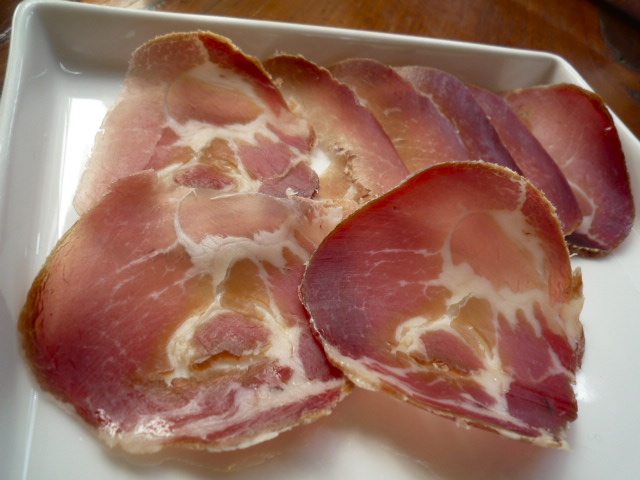
SO much better than prosciutto! Extracted below is a description of the process the pork undergoes (written by my mother):
Papà has been curing his own capocollo for years. He used to cure prosciutto, but that proved to be too much meat to eat in a short time, especially as his prosciutto became ready to eat at Christmas, when it's hot. The meat potentially goes off quickly. Capocollo takes about 6-7 weeks to dry and therefore can be eaten in late winter (as June-July seems to be the best time to make it). The part of the pork is the "capocollo" (part of the fleshy part of the neck and upper back of the animal).
It usually weighs 1.5-2 kgs and loses about 30-40% of its weight in the drying process.
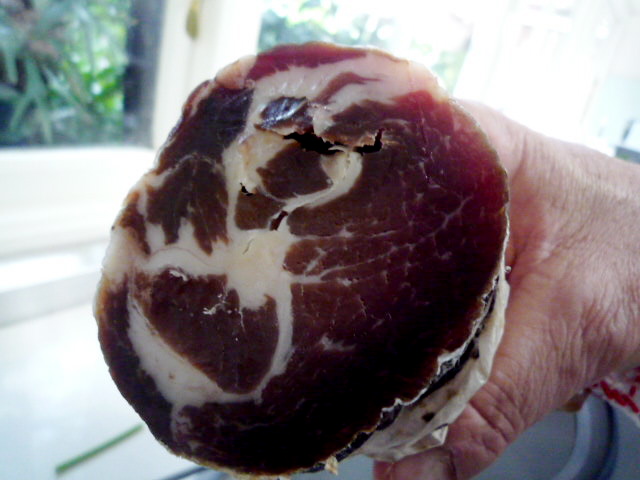
The meat should be trimmed of visible fat with a small, sharp knife. It should then be immersed in rock salt, and left for 18-24 hours. Once taken out of the salt, the meat must be washed to remove the salt crystals, then carefully dried and laid out on a chopping board. More fat trimming can now be done and more easily too as the fat is more visible due to the action of the salt.
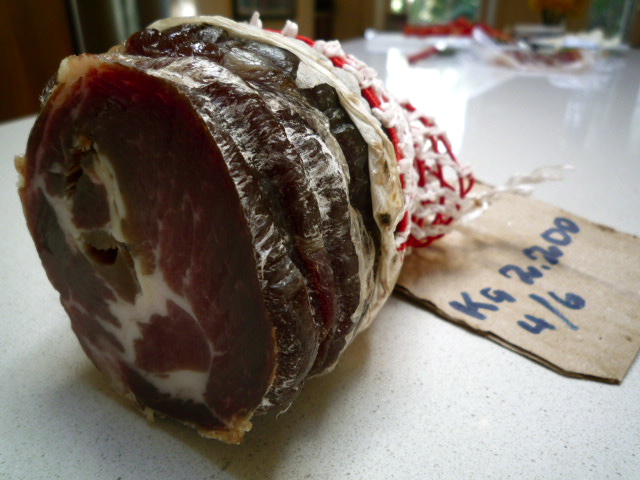
The meat is now ready to be seasoned. Use coarse pepper, whole cloves and a cinnamon stick or two. Then roll the meat as tightly as possible and tie very securely with butchers string up and down the length of it. The capocollo should now be covered in a stretchy string cover (available from the butcher). It can easily be sheathed by the means of an aggy pipe.
Both ends of the string casing should be tied securely, and it should be labelled with date of curing and preferably weight of the capocollo. It should now be hung in a cool dry and well-ventilated spot; a meat safe type arrangement works well.
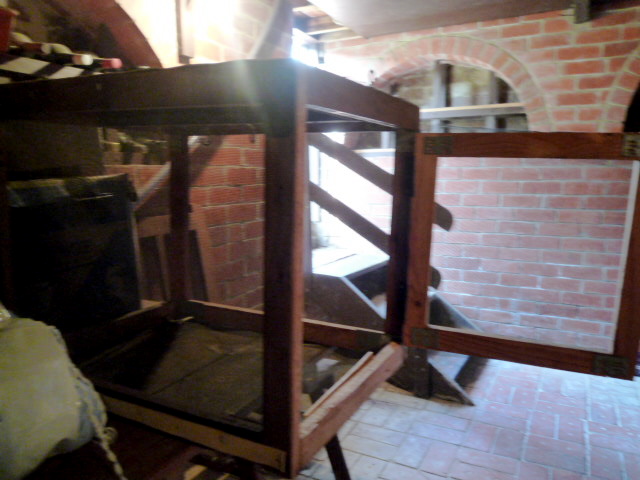
By applying firm pressure with your fingers, it is possible to periodically determine how well it is drying. It should have a little bit of give - if it gets too hard, it becomes chewy and unpalatable. If you feel your capocollo is drying too quickly, a method of slowing down the process is to place it in a box filled with wheat, so that it is totally submerged.

Using an electric slicer can improve the taste as slices are thinner and more even. Buon appetito."

After the anniversary lunch, I drove Nonna and Nonno home to Vermont South yesterday afternoon. I took the opportunity to take photos of the flyscreen cage he made to protect his curing meats from blowflies (see above), and to check out how the radicchio in his garden was faring.
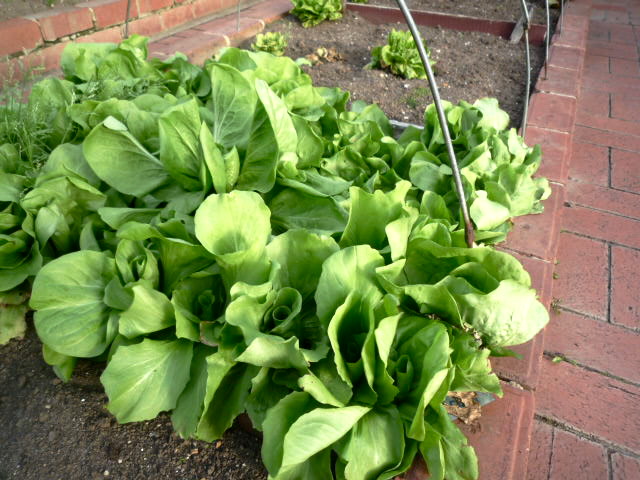
Oh, and here are some food porn photos from the anniversary lunch itself. We had two crimson salads: one of roasted baby beetroot and another of radicchio rosso, Spanish onion and pine nuts.
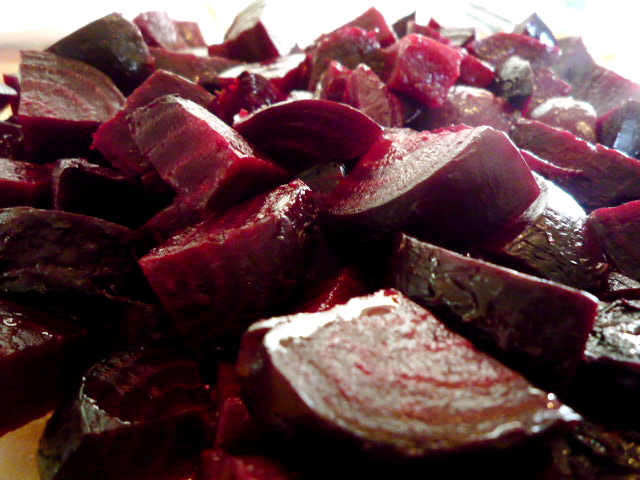

Somewhat unusually (given that we're northern Italians, more used to polenta and strudel) we had pizze. One of the pizze bianche we had featured mushroom, sliced potato, taleggio and rosemary, the other gorgonzola, cherry tomatoes and torn basil.
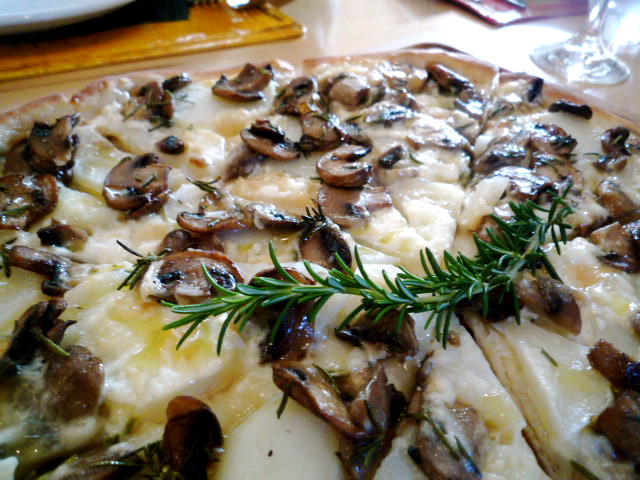
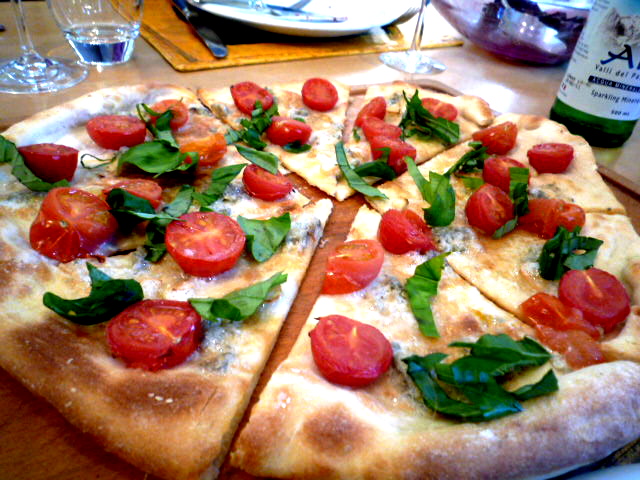
Ever since the Great Mussels Incident Of 1999 that I was unlucky enough to experience in Montmartre, I tend to steer queasily clear of most bivalves. However, I make an exception for good oysters, and for clams (vongole, in Italian). We had linguini alle vongole, using pasta all'uovo, chilli, Italian parsley and a small quantity of chopped fresh tomatoes added just prior to serving. Completely delicious.


Two cakes for dessert. One was a chocolate mousse cake from Laurent, and another (far more interesting) cake made by Mamma: a frangipane tart containing chopped dates and topped with pistachios and heated fig jam.
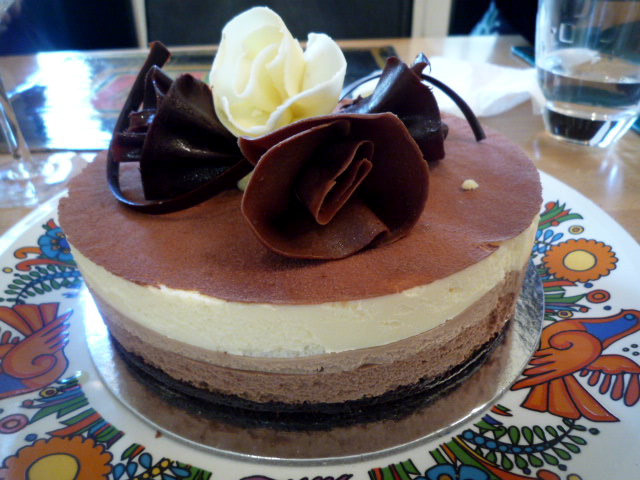
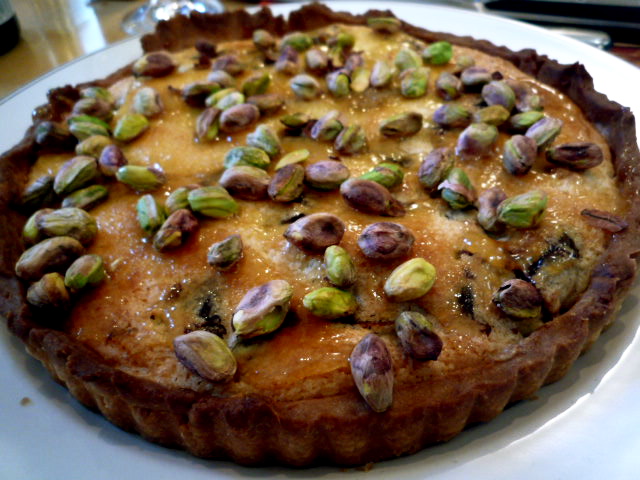
It don't get much better than this!
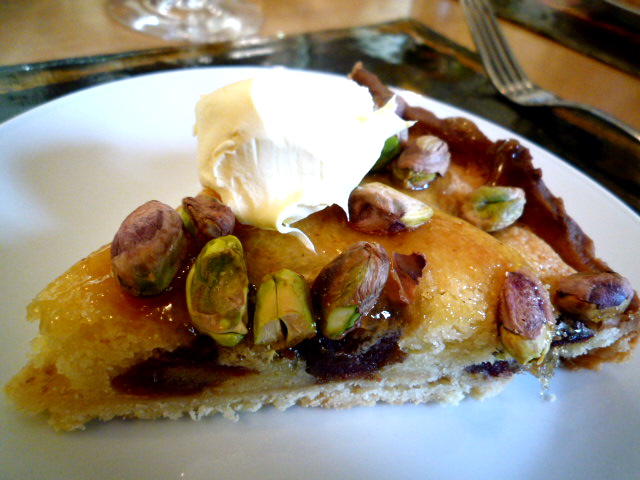

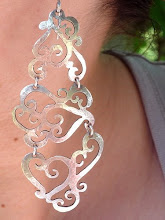


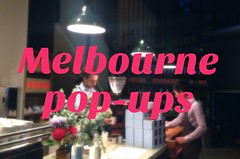

11 comments:
The chocolate mousse cake looks good, but give me a slice of Mamma's frangipane tart any day! Looks absolutely fantastic.
Hiya Claire, thank you for sharing that capocolloo recipe, it looks fab. What a treasure it is to be able to learn these traditions from your family, you are very lucky & they you, for keeping the recipes alive.
the food looks fantastic and your noono sounds like a fascinating guy - how great to have the photos and such great foodie family traditions
great post!!! My parents still make their own salami and capacollo, and the capacollo looks exactly like your Nonno's!! It's my fave cured meat by far:)
That is amazing! So fortunately to be able to get together as one big family and all these traditions being passed on. Lovely :)
hi Claire
I looove capocollo, your nonno's version looks amazing. You're very lucky! I tried the capocollo panini at ortigia and agree- pretty damn good. The lyonnaise sausage with sauerkraut is excellent as well
thanks for sharing. in our ever reaching consumer driven world, these occassions/expereinces can not be purchased.
congrats to the young couple!
dan
Thanks, Japaneats! I preferred it to the other cake too. Chopped dates and pistachios and fig jam, oh my!
Hiya steve, thanks. The next step is for me to try and make one myself, under his supervision!
Thanks Johanna. He is indeed a fascinating guy. If this wasn't a food blog I'd write a series of blog posts about his life!
Hi quasi, thanks! Capocollo and bresaola are my tied favourite cured meats...
Thanks penny! I'll do a post on my Nonna's cooking soon. :)
Hi Barbarella - ah, that's right I'd forgotten they have capocollo at Ortigia. Will go back there once we've run out of my Nonno's and I need a fix!
Thanks dan/ozmouse! I'll pass on your congratulations to the young couple :)
No seriously, lets swop families. (well except for my mum ... she's too good a cook to lose). Your Nonno's photo album must be fascinating!!! I'd love to see what Melbourne looked like in dem days ... any chance of putting up pics with greater detail? (ps enjoyed your NYC posts immensely - have never been and am dying to go - welcome back)
I was just researching on how to make capocollo and look at what I found. I've successfully made salami and bresola in the past and have some curing in my cold cellar presently. So now it's time to follow 'Nonno's' recipe.
Also, I'm from a small town called Frisanco possibly 2 hours west and slightly north of Trieste and very close to a large city of Maniago, where my father was born in 1910. You cam see the Piazza live on www.magris.it I was very interested in knowing of your family's Italian background having come from Pula in the Istrian Peninsula. Then again that part of the world kept changing governments back then.
Well thank you and I'm also a nonno
Hi, just read your post on capacollo and your nonno. I myself come from from Italian background in northern Italy in a small town called vol Pago in which my nonnas family still owns and runs the winery called the house of Paolin. My nonnas maiden name was pozzabon and my nonnos surname the same as mine is Michielin. They made salami and capacollo all the time. Now that they have gone to paradise,I keep the traditions of the small goods going with my father and brothers. This is my favourite time of the year, so I know we're you are coming from .LIFE IS GREAT WITH !
Post a Comment